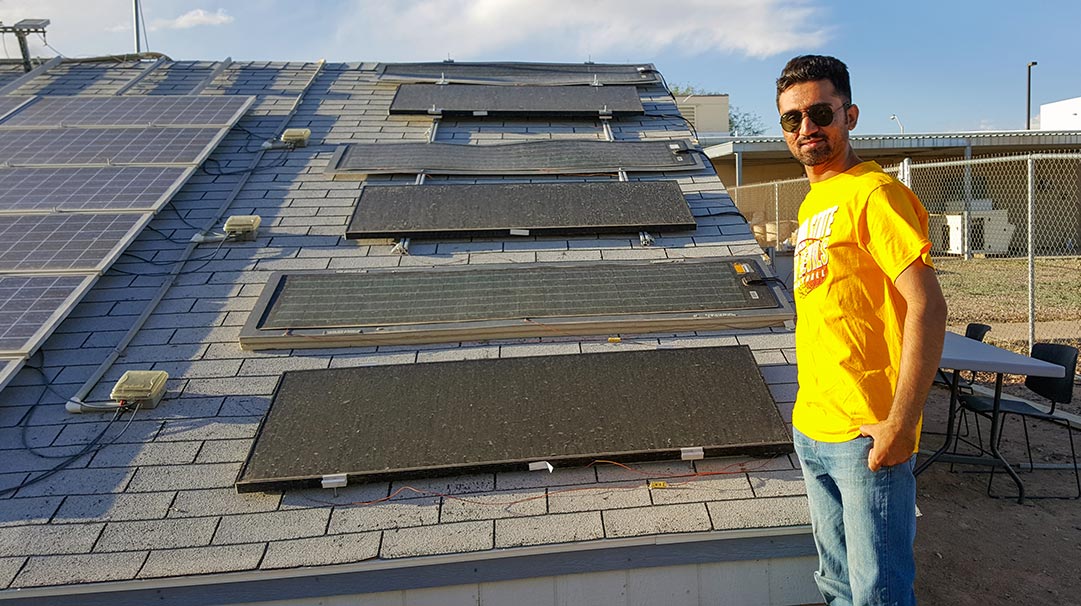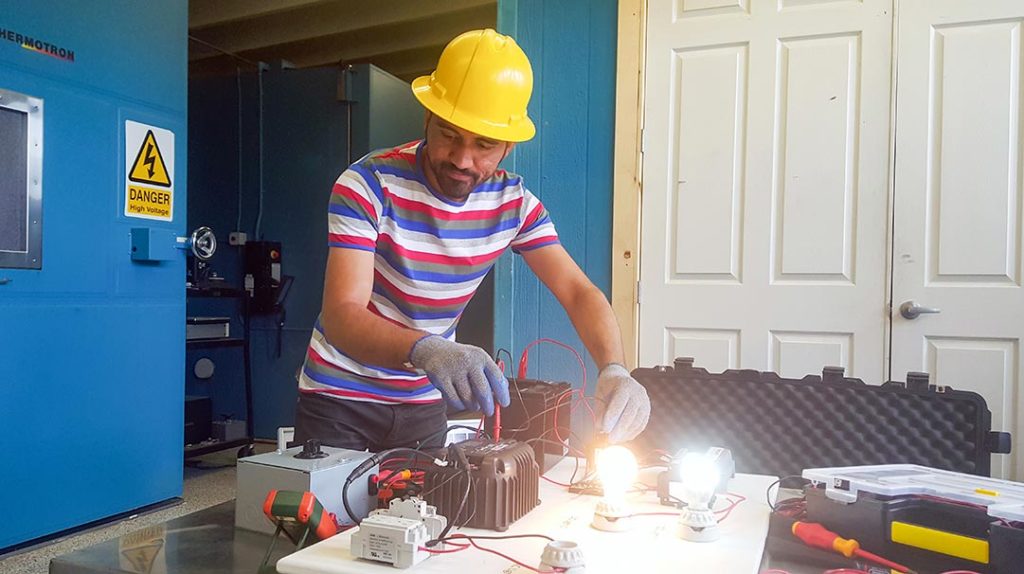This engineer put renewable energy knowledge to work

Amir Nangyal built his solar energy system after his first semester of study.
Some students earn a degree and work in their profession for a while before creating their own implementation. Not Amir Nangyal. He joined USPCAS-E at UET Peshawar and built his solar energy system after his first semester of study.
“My goal is to provide energy solutions and opportunities, research all industrial problems as much as I can and improve the industrial sector,” Amir explains.
Amir is from Yarhussain, a village in the Swabi District, a district in the Mardan Division of Khyber Pakhtunkhwa province in Pakistan.
Growing up, energy crises were a fact of life for Amir. Power outages of up to 18 hours in the heat of summer were commonplace. He knew that he wanted to change the situation for himself and his country. During his first semester, he learned how to design a PV system and then installed one in his home.
“I decided to be an engineer and find a solution to this problem. Alhamdulillah, for the last three years, I haven’t faced load shedding because I installed a solar system in my house.”
Amir explains that Pakistan lacks expertise and access to technology in almost every field. And the energy sector is no exception.
“My wish is to teach everyone about designing their own system and doing power load management.”
Amir currently holds two positions. He’s a project coordinator for the development of a 50MW solar power project in Dera Ismail Khan, or D.I. Khan, that is sponsored by FAS Energy (a subsidiary of the FawazAlhokair Group).
He’s also a technical consultant with Baker Tilly Mehmood Idrees Qamar Chartered Accounts for the evaluation and ranking of pre-qualification documents submitted to Pakhtunkhwa Energy Development Organization for the development of hydropower projects conceived by independent power producers, or IPPs.
Before joining USPCAS-E, Amir worked as an assistant manager at Spinning Mill in Gadoon Amazai Industrial Estate, District Swabi, Khyber Pakhtunkhwa. He was looking for ways to improve his skills and education in the field of energy. He knew that he wanted to develop a PV system for his home to get rid of load shedding.

At USPCAS-E, he learned how to do just that. During his exchange visit to ASU in Spring 2016, Amir worked at the Photovoltaic Reliability Lab (PRL) at ASU. His exchange opportunity provided him with critical hands-on experience with a PV system.
“At the end of the training, we were masters of solar panels and PV systems because we performed different tests for claiming warranty of PV panel, factors affecting efficiency, factors affecting materials, defects in PV panels, and causes of failure of the PV system. Because of this knowledge and experience, I got the project coordinator job, and that has boosted my career,” Amir explains.
During Amir’s training at ASU, he learned how to make weather stations and worked with an MTT (mobile training tool kit), performing different experiments and designing the solar energy system. By installing weather stations, Amir explains, he can get real-time data in that location, and sharing this data can help IPP’s in the development of their projects.
“I want to introduce MTTs in every engineering university/college to facilitate hands-on testing. Every student should be able to design a PV system for their own house to make the saying ‘Every house is a powerhouse’ true,” says Amir.